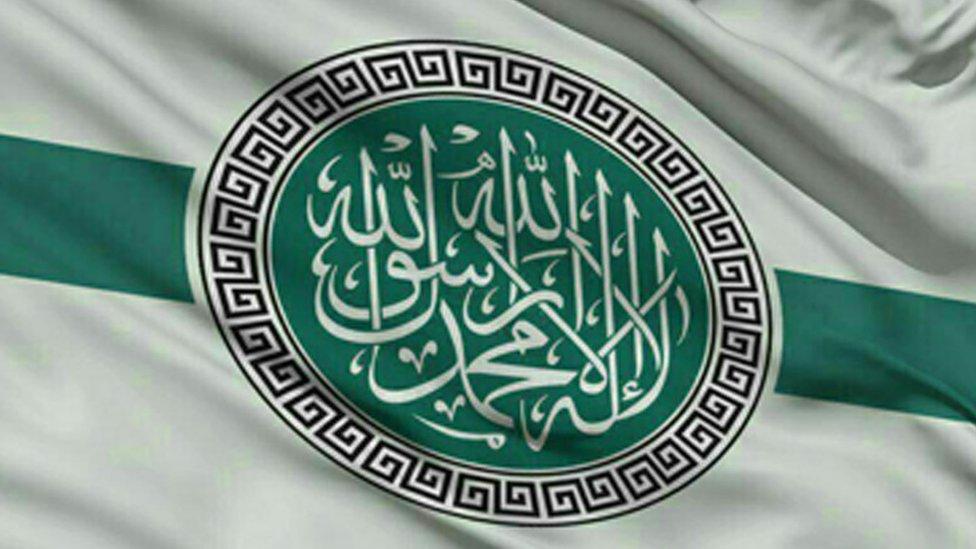Syria war: Scores of civilians killed in Eastern Ghouta strikes
- Published
Children were among those rescued after Monday's air strikes in Eastern Ghouta
Bombardments by Syrian government forces have killed at least 100 people including 20 children in the rebel-held Eastern Ghouta area outside Damascus, rescue teams and monitors say.
This would make Monday one of the deadliest days for the district since it came under siege in 2013.
The Syria Civil Defence, also known as the White Helmets, said bombs were continuing to fall on Tuesday morning.
Syrian forces stepped up an offensive to retake the area earlier this month.
The Eastern Ghouta is the last major opposition enclave near the capital and is completely surrounded by areas under government control.
Local Co-ordination Committees, an opposition activist network, reports that civilians have been killed and wounded in fresh air strikes on Douma, Misraba and al-Nashabiya.
The White Helmets, a rescue group, said three people were killed in Misraba and four were killed in al-Marj on Tuesday.
The UK-based monitoring group the Syrian Observatory for Human Rights (SOHR) and the White Helmets both said more than 100 people had died in bombing on Monday.
Urging a halt to the bombardment, a UN official said the situation was spiralling out of control.
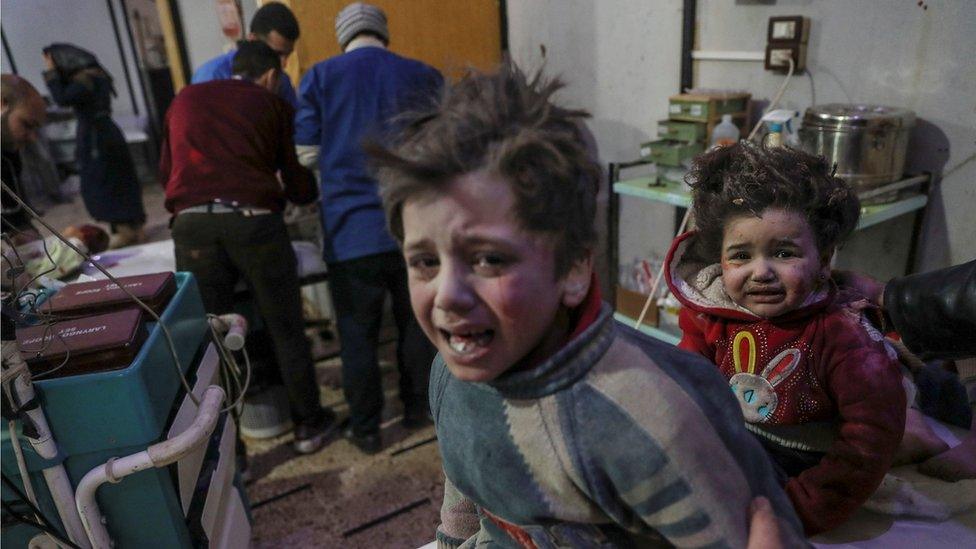
Children have been hurt in the latest bombing
Last week the Eastern Ghouta, home to almost 400,000 people, received its first aid delivery in almost three months.

Worst bombing in years
Analysis by Lina Sinjab, BBC Middle East correspondent
The attacks on the Eastern Ghouta area since Sunday have hit not only civilians but also their means of survival, targeting bakeries, warehouses and anything else that may hold food supplies.
It is the worst single day of bombing that people there have seen in years. People are fearful of it becoming another Aleppo scenario.
Aid workers say the attacks targeted major roads in the area, which will block any aid or rescue operation and hinder the movement of ambulances.
The death toll is rising because medical facilities were also hit. Four makeshift hospitals, including a maternity facility, were struck on Monday. The rebels have been responding with mortar attacks on Damascus but the government's military might is far stronger.

How bad is the situation in the Eastern Ghouta?
Videos from Hamouria, a town in the enclave where at least 20 people were reportedly killed in air strikes on Monday, showed people fleeing heavily damaged buildings covered in dust and debris.
In December international aid organisations warned conditions in the rebel-held area had reached a "critical point" for civilians because of shortages of food, fuel and medicines.

UN regional humanitarian co-ordinator Panos Moumtzis said it was "imperative" to end the "senseless human suffering" in the Eastern Ghouta.
"Many residents have little choice but to take shelter in basements and underground bunkers with their children," he noted.
However, Russian Foreign Minister Sergei Lavrov said conditions in the enclave were being exaggerated by international actors.
"In the UN, the topic of humanitarian problems in the Eastern Ghouta and Idlib is being actively hyped up," he said, according to Russian media reports.
Father describes a 'miserable day for Eastern Ghouta'
Next month marks seven years of civil conflict in Syria.
Hundreds of thousands of people have been killed and an estimated five million have fled the country.
What is the Eastern Ghouta?
It is an agricultural belt, about 15km (nine miles) east from Damascus city centre.
The area is made up of 22 communities.
It has been designated a "de-escalation zone" by Russia and Iran, the Syrian government's main allies, along with Turkey, which backs the opposition.
Who controls the enclave?
Several rebel groups operate in the Eastern Ghouta, but it is dominated by the Islamist faction Jaish al-Islam. Hayat Tahrir al-Sham, a jihadist alliance led by al-Qaeda's former affiliate in Syria, also has a presence there.
- Published14 February 2018

- Published7 February 2018
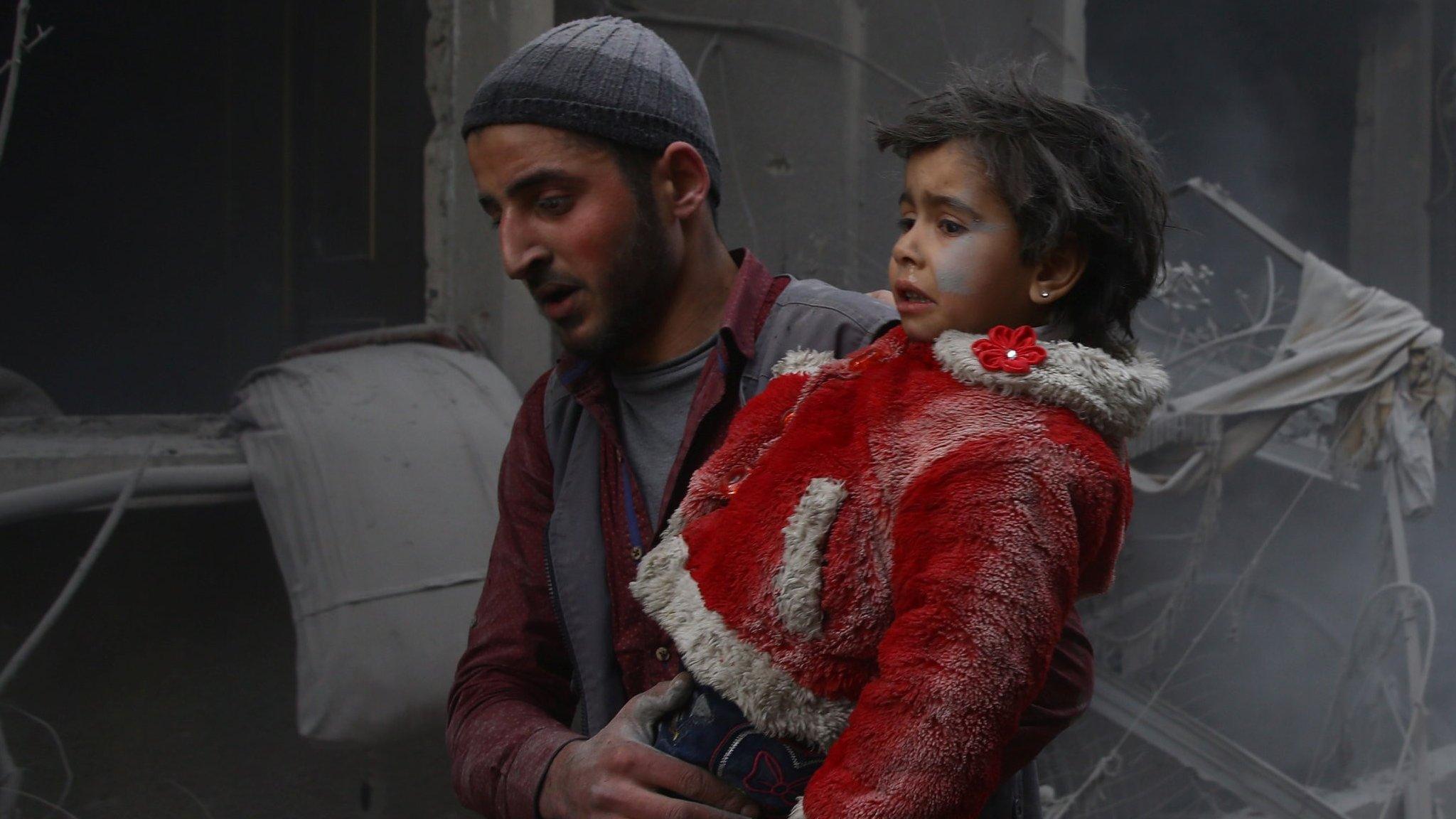
- Published18 December 2017
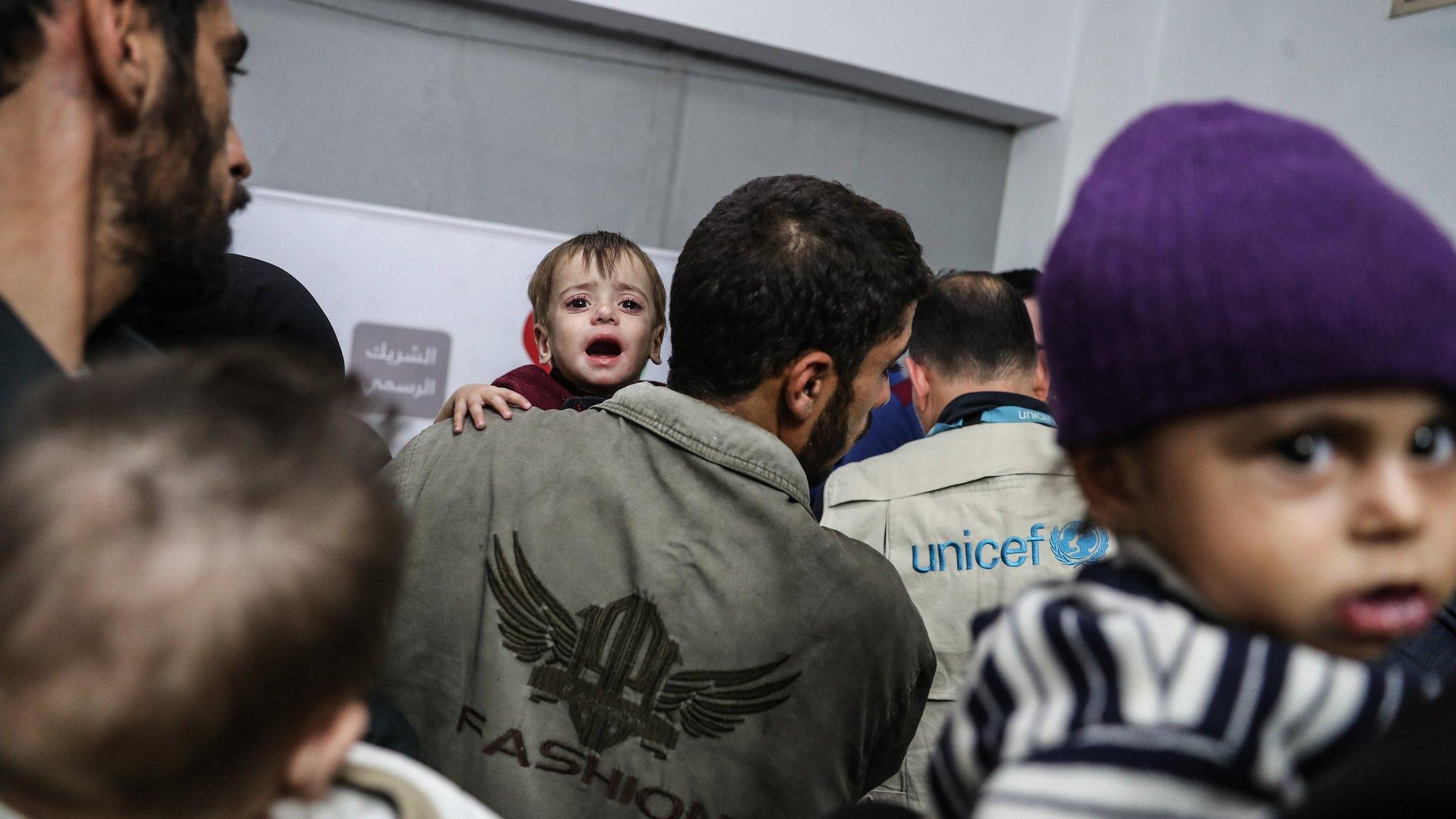
- Published27 December 2017
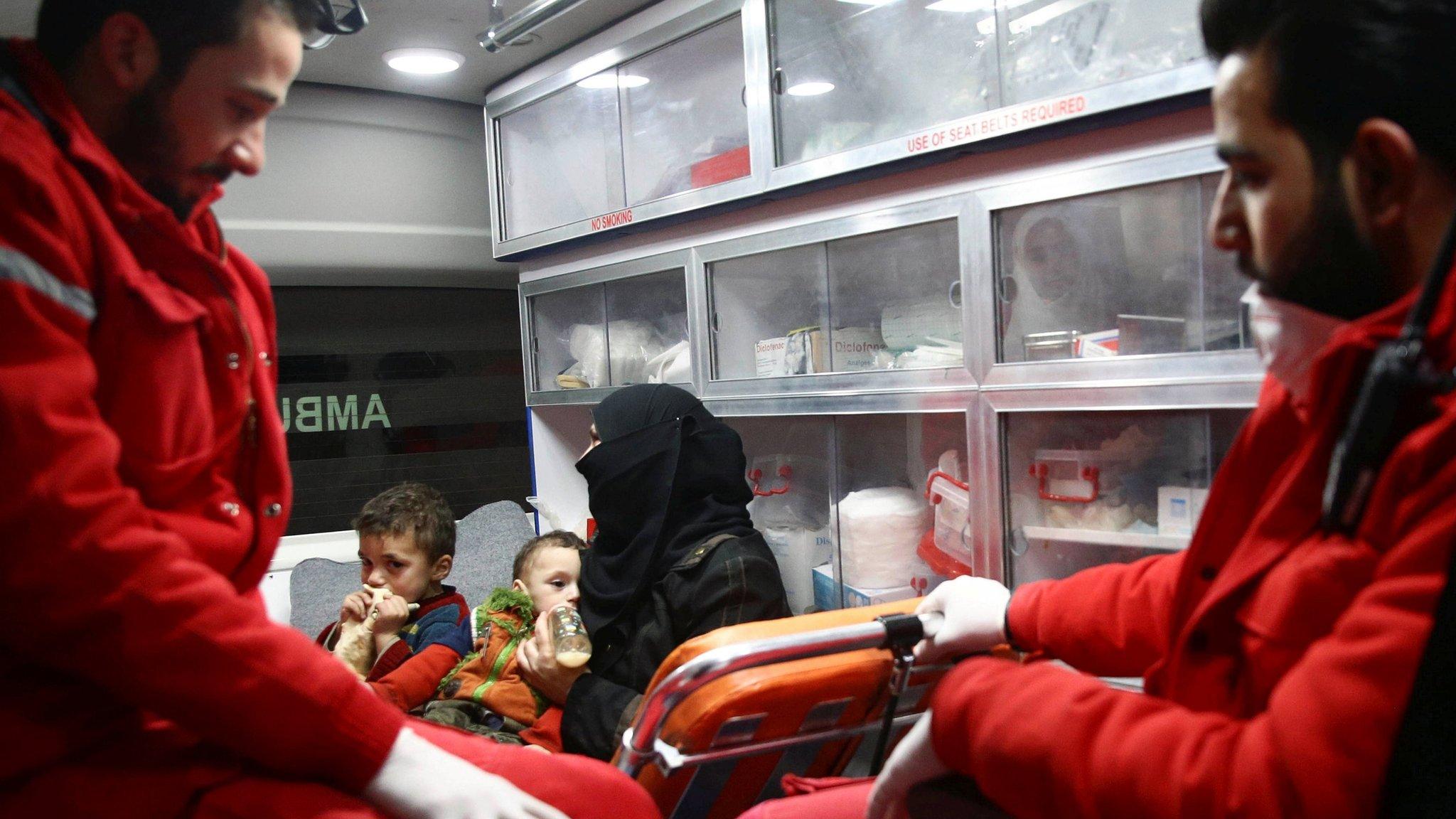
- Published28 February 2017
